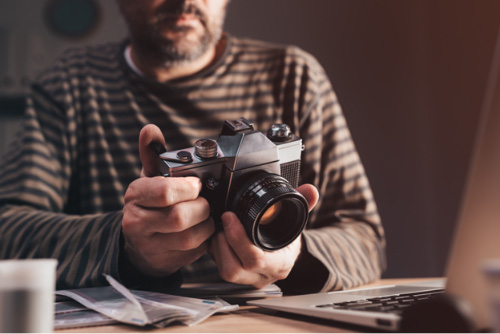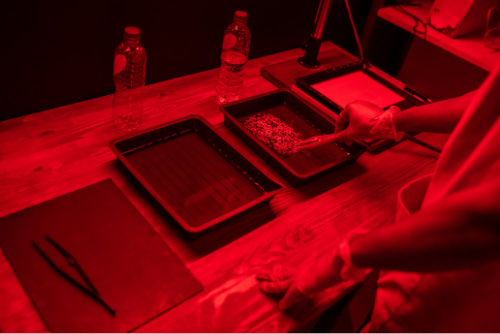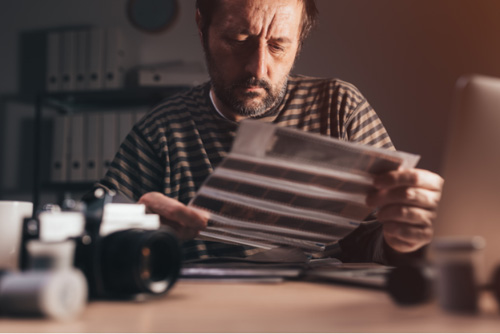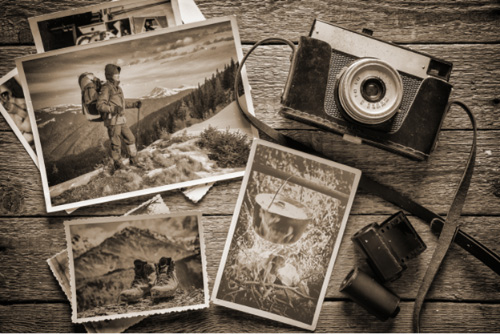
Unraveling the Past: A Journey through the Art of Film Development at Laguna Digital
Ed, a man in his late forties, was rummaging through his parents’ attic, dust floating in the beams of sun pouring through the small window, when he stumbled upon a blast from the past. It was a vintage Minolta X-700, a marvel of a camera back in his teenage years. Even more intriguing, it still housed a 35mm Kodak colored film roll. His heart fluttered with excitement and nostalgia. What could be captured in this decades-old film?

But reality abruptly hit him: this was 2023 when digital photography dominated, and traditional film-developing labs were rare. But he didn’t give up and turned to Google, his fingers quickly tapping his search: “film development near me.” The first name that popped up was Laguna Digital, located in the picturesque setting of Laguna Beach, California. A one-hour drive? Ed didn’t mind; he had a treasure in his hands, and he was eager to unlock its secrets.
As he walked into Laguna Digital, the oceanic aroma of Laguna Beach washed over him, the subtle hint of chemicals reminding him of the magic that was about to unfold. Behind the counter stood Charles, a man whose eyes radiated with the enthusiasm only a lifelong photographer could possess. He noticed Ed’s Minolta and saw in Ed’s eyes the same spark. “Ah, a Minolta X-700,” Charles exclaimed, gently cradling the camera in his hands. “We don’t get these every day!”.
Recognizing a fellow photo enthusiast, Charles invited Ed into the development room, where he meticulously explained the process of color film development.
“First, we have to load the film onto a reel in total darkness, Ed,” Charles began, “This is to prevent any light leaks which might ruin your precious photos.” Ed watched with keen interest, drawn into the intricate process.

“We then bathe the film in a color developer, where the magic happens. The developer transforms the exposed crystals on the film into metallic silver and forms color dyes.”
Ed’s eyes widened, absorbing the complexity of the process and the skilled hands of Charles that navigated through it.
“We then bleach the film to remove the metallic silver, leaving only the color dyes behind. Then comes the fixing stage, where any unexposed and undeveloped silver halides are removed to prevent further reactions.”
As Charles explained, Ed could almost visualize his forgotten moments unfolding, drenched in a palette of vibrant colors.
“Finally,” Charles concluded, “we wash the film thoroughly to remove any remaining chemicals and dry it carefully. What you’re left with is a beautiful color negative of your memories.”
After the excitement of the film development, Charles guided Ed through the next step, the printing process.

“Now that we have the negatives,” Charles began, “we will transfer these images onto photographic paper. The result is an analog print with a depth and quality that digital prints struggle to replicate.”
Ed nodded, eager to see the process unfold.
“The first step in printing a color negative,” Charles explained, “is to select the right photographic paper. Here at Laguna Digital, we use high-grade paper that accurately reproduces your photos’ full spectrum of colors.”
Charles selected a sheet of paper and placed the negative into an enlarger, an optical printer that projects and magnifies the image from the negatives onto the photographic paper.
“The enlarger lets us control the size of the final print, as well as the exposure time,” Charles said. “It’s a delicate balancing act to ensure the photo is neither too dark nor too light.”
Ed watched as Charles adjusted the enlarger, focusing the image onto the paper. Once satisfied, he switched on the light, allowing it to expose the paper for the predetermined time.
After this, the photographic paper was carefully immersed in a color developer. Like the film process, it transformed the exposed crystals on the paper into metallic silver and formed color dyes.
“Then, we bleach-fix the paper,” Charles explained. “This removes the remaining silver and leaves only the color dyes behind, just like in the film. After this, we wash the paper to eliminate residual chemicals and dry it carefully.”
Ed watched in amazement as his photo slowly emerged on the paper. The final result was a vibrant print, far removed from the monotone of the negatives.

Ed held the print in his hands, his memories captured with a richness and depth that seemed to bring the past to life. He was mesmerized by the vibrant colors and the fine detail in each picture, each one a testament to the expertise of Laguna Digital.
“The beauty of this process,” Charles added, “is that it’s both science and art. Every print is unique, and that’s part of what makes film photography so special.”
At Laguna Digital, Ed realized they didn’t just offer a service; they provided an experience. Their dedication to the craft and exceptional customer service had turned the seemingly simple act of developing and printing a film into a journey through time and a celebration of photography.
As he left the shop with his prints and negatives, Ed was confident he would return. After all, he had found a place that treated his memories with the reverence they deserved. Laguna Digital had brought his past to life, not just in vibrant color, but with a warmth and attention to detail that was genuinely unparalleled.
